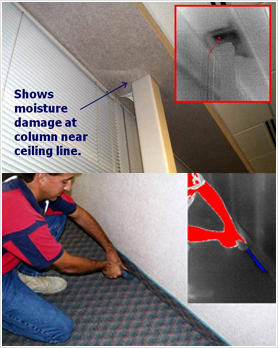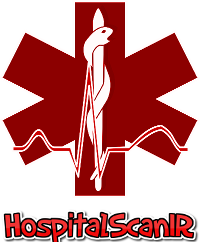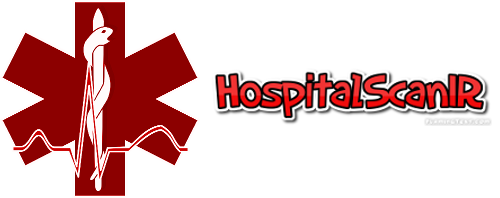The Building Division of Stockton Infrared Thermographic Services, Inc. has performed qualitative infrared thermographic surveys of moisture in buildings since 1989. We bring to our clients experience, state-of-the-art high-resolution infrared imagers, digital recording equipment, techniques that have been refined over many years and the attitude that we are going to obtain the best imagery possible and produce a professional report in a timely manner. Our deliverable product is the best in the field of infrared thermography on the market today.
Although some of the very first applications for infrared thermography were building analyses applications, other applications have surpassed this field in popularity for 15 years. One reason is that it is a very challenging field of infrared thermography. There are many different types and uses of buildings, many different construction techniques, building materials and configurations. A building infrared thermographer must be familiar first with construction and then with the thermal dynamics and characteristics of these different building components. In addition one must understand how to accomplish the infrared survey with changing ambient and thermal transient conditions, taking advantage of these conditions.
Understanding Infrared Imagery
Infrared imagery is often a grayscale picture whose scales (or shades of gray) represent the differences in temperature and emissivity (opposite of reflectivity) of objects in the image. As a general rule, objects in the image that are lighter in color are warmer, and darker objects are cooler. No object in the images is detected via visible light wavelengths (400-700 nanometers) rather, only from infrared wavelengths in the 3000-5000 nanometers or 3-5 micrometers (microns) range. Lights and other relatively hot objects are very evident, but as a result of their heat…not light emissions.
When an image is taken with an infrared camera, it is often recorded onto videotape and/or digitally saved to an on-board PCMCIA card. The image may be then modified in a number of ways to enhance its value to the end user. Usually, building images are digitized, saved and converted to TIFF images through the use of proprietary software. The images are then adjusted for color, contrast and brightness before being scaled and placed in a PowerPoint file. The file is then printed on photographic paper by using a photo quality printer. Images are recorded onto a digital videotape via S-Video direct cabling, then recorded onto any format that is desired by the client, for example VHS, 8mm, DVD, mini-DV or CD-ROM.
Infrared Testing Methodology
At different times of the day and night, building components show differences in temperature because of differences in mass, voids, moisture content and/or heat loss because heat from thermal changes radiates from these areas at different rates. During thermal transient conditions, we scan the walls with a sensitive infrared camera to detect the sources of heat and record them for later analysis. Since our infrared thermographers use real-time imaging and recording IR equipment, they can immediately determine if and exactly where, problems exist. They will then record matching visual imagery with a digital videotape recorder and/or photographic camera for reference purposes.
Uninsulated Column Passes from a Cool Area

Ductwork Not Properly sealed to Diffuser

Moisture in Exterior Wall

Moisture in an Exterior Insulation and Finish System (EIFS) wall

Condensation forms on column, leaking into the building

Moisture in a Sheetrock wall

Moisture Verificaion

Moisture Verificaion



